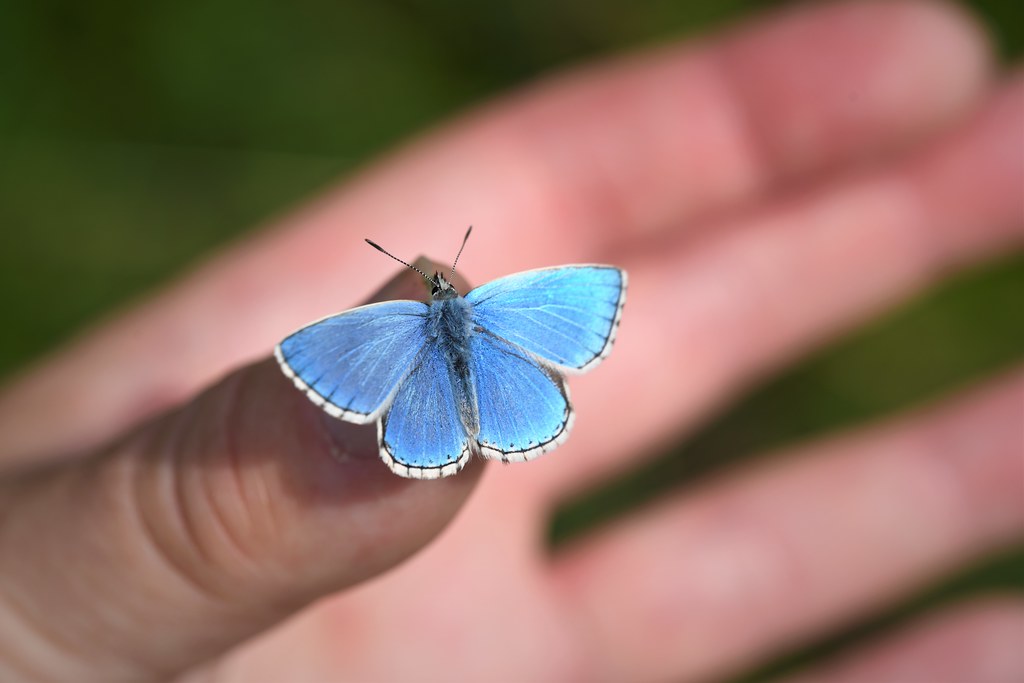#British Lepidoptera
Video
Adonis Blue (Polyommatus bellargus) taking a sweaty drink... by Will Atkins
Via Flickr:
As I was trying to get a photo of it on some marjoram this male decided to make life a little harder for me by landing on my thumb instead!
#Adonis Blue#Adonis Blue Butterfly#Polyommatus#Polyommatus bellargus#Blue Butterfly#Blue Butterflies#Lycaenidae#Wildlife#Wildlife of Europe#European Wildlife#Animal#Nature#insect#Insects#Insects of Europe#Insects of Britain#Lepidoptera#Lepidoptera of Europe#UK Lepidoptera#Dorset Lepidoptera#British Lepidoptera#butterflies and moths#Butterflies#Butterfly#butterflies of Europe#UK butterflies#Dorset butterflies#butterflies of Dorset#Purbeck wildlife#close up
10 notes
·
View notes
Text
Peacock butterfly (Aglais io) photos I took 14/04/2024, Stanley, Wakefield, West Yorkshire, UK



#nature#nature photography#animals#british nature#animal#wildlife#animal photography#wild#wildlife photography#wild animals#wild animal#peacock butterfly#peacocks#peacock#aglais io#tortoiseshell#nymphalidae#butterflies#red#butterfly#butterfly photography#lepidoptera#insect photography#insect#insects#entomology#invertebrate#invertebrates#bugs#bug photography
69 notes
·
View notes
Text

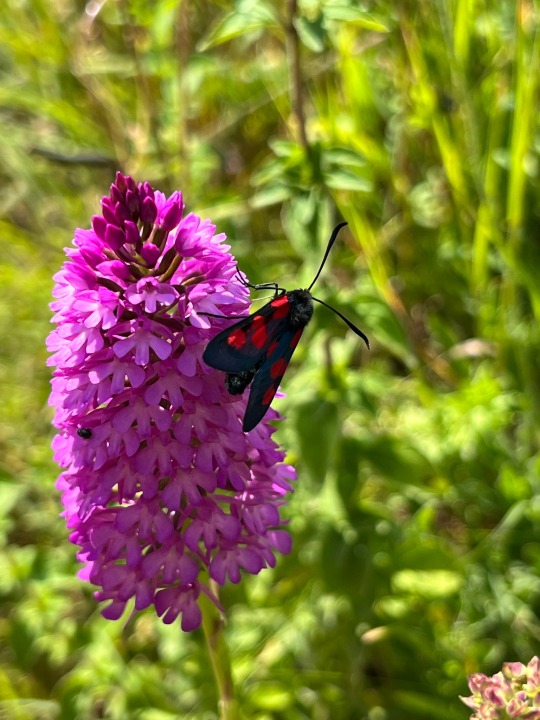
Six spot burnet moth on a wild orchid, South Downs, UK
(C) do not use, edit, reupload
#moth#Lepidoptera#uk moth species#uk insects#orchid#chalk upland#british wildlife#ghosti’s photography#non monster post
95 notes
·
View notes
Text
For #LearnAboutButterfliesDay:

"Montreal, June 1792. The Black as rich as velvet; the inside of the above butterfly." #SciArt by Elizabeth Simcoe (English, 1762-1850). Identifiable as a female Eastern Black Swallowtail (Papilior polyxenes).
#animals in art#animal holiday#european art#illustration#Learn About Butterflies Day#butterfly#butterflies#lepidoptera#women artists#women’s history month#natural history art#scientific illustration#sciart#swallowtail#eastern black swallowtail#species ID#Elizabeth Simcoe#British art#18th century art#colonial art
14 notes
·
View notes
Text

Small emperor moth Saturnia pavonia - male
Found in moorlands across the Palearctic regions, the small emperor moth is the only saturniid to be found on the British Isles.
Image credit: Illuvis on Pixabay
[image ID: a moth with brown and white forewings and black and gold eyespot with red accents on the antemedial line. The hind wings are orange with black and on the submarginal and pink on the marginal. There are similar black and gold eyespots on the hind wings.]
#small emperor moth#saturnia pavonia#moth#Illuvis#lepidoptera#saturniidae#saturnia#palearctic#british isles#image free from pixabay#insect
31 notes
·
View notes
Text
The Buff-Tip Moth: the resting posture, shape, and color/pattern of the buff-tip moth allows it to mimic a broken birch twig; the moth's buff-colored head and the patches on its hindwings even resemble freshly-snapped wood

It also definitely tends to look like there's a weird little smiley face in the setae surrounding the moth's head, which is arguably even more striking but for some reason none of the sources I dug up on this species seem to mention that weirdness.

This type of camouflage is generally referred to as a "protective resemblance" -- a form of mimesis in which an animal can avoid being preyed upon by mimicking an inedible/unremarkable aspect of its environment. Many different moths are able to disguise themselves in similar ways, and it is especially common within the family known as Lasiocampidae. Some of the other species that engage in protective resemblance include Gastropacha quercifolia, Gastropacha pardale, Gastropacha populifoli, Euthrix potatori, Euthrix laeta, and Calyptra minuticornis (along with the other members of genus Calyptra). Most of these moths disguise themselves as leaves/foliage.
The buff-tip moth is particularly adept at disguising itself, however, and the fact that it so strongly resembles such a specific object (i.e. not just a dead leaf or a vague piece of foliage -- but a broken twig from a silver birch tree, in particular) makes this disguise seem even more impressive/unique.
This species (Phalera bucephala) can be found throughout the British Isles, mainland Europe, and Asia, with its range extending into Eastern Siberia.

Sources & More Info:
Wildlife Insights: Buff-Tip Moth Identification Guide
ButterflyConservation.org: Buff-Tip Moth
The Wildlife Trusts: Buff-Tip Moth
Wildlife Insight: the Buff-Tip Moth
Moth Identification: P. busephala
Encyclopedia of Life: Global Map of Known Occurrences for P. busephala
Insecta: Phalera bucephala
Lepidoptera and their Ecology: P. busephaloides and P. busephala
Journal of Ecology & Evolution: Strong Foraging Preferences for Ribes alpinum in the Polyphagous Caterpillars of Buff-Tip Moth Phalera bucephala
Dickinson County Conservation Board: Protective Resemblance & other Forms of Mimesis/Mimicry
#lepidoptera#entomology#insects#bugs#buff tip moth#weird bugs#critters#animals#moths#are#wildly#underrated
23K notes
·
View notes
Photo
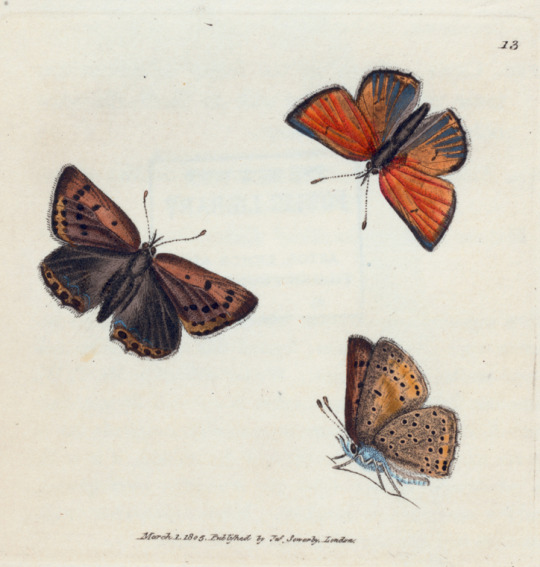
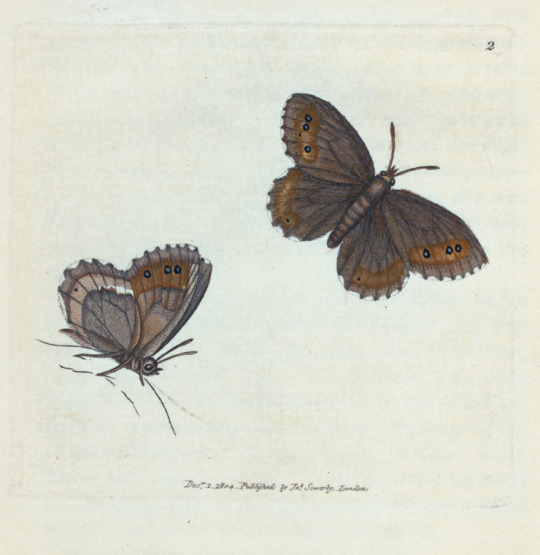

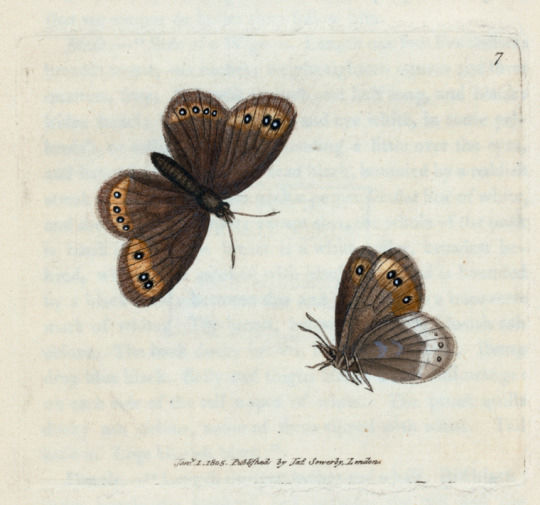

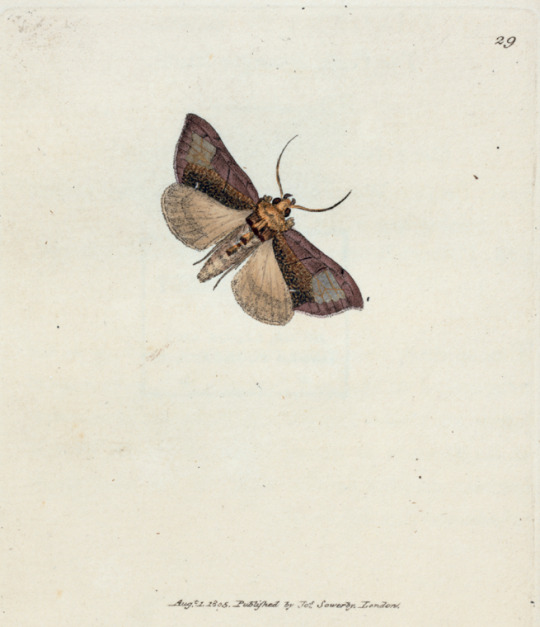
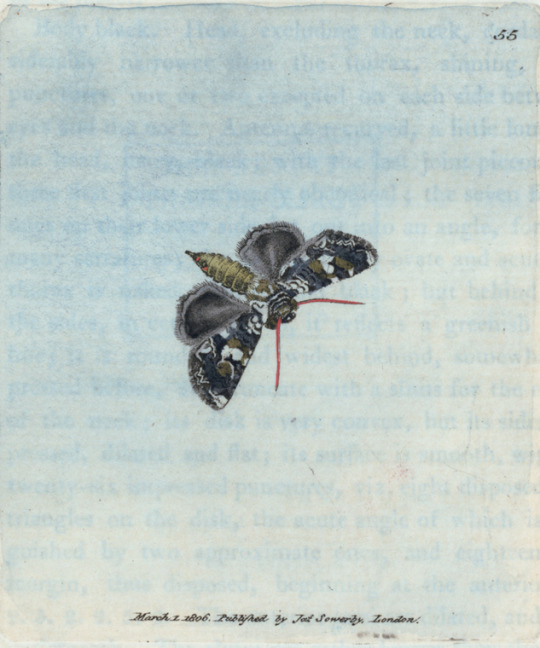

Illustrations of Lepidoptera taken from ‘The British Miscellany’ (1804 - 1806) by James Sowerby.
Printed by R. Taylor & Co. and sold by the author.
Images and text information courtesy NYPL Digital Collection.
564 notes
·
View notes
Photo

🦋 Catalogue of the Lepidoptera Phalænæ in the British museum London: Printed by Order of the Trustees, 1898-1920
13 notes
·
View notes
Text
⚜⚘ A B O U T ⚘⚜
⚜Welcome to my messy blog!
⚜My name is Fox Pearl Wilder. He/him.
⚜Main blog (replies, likes from it)- @foxpearlwilder. @foxpearlwilder2 personal/goblincore. @vaporpearl vaporwave.
⚜ Ukrainian, disabled, ASD, ADHD, more; intersex, artist writer.
⚜A billion years old.
⚜Tone tags for jokes are preferred. ⚜Occasional skipping of words.
⚜Languages- English, Ukrainian, French.
⚜This blog is for reblogging fandom/interest-related posts, posting fandom/wip art, shitposting.

⚘ F A N D O M S:
🌧Little Pets Shop (G1-G4 merch)
🌧Monster high (Merch, show, movies)
🌧My Little Pony (G1-G4 Merch, G4 show, G5 show.)
🌧Ever After High (Show)
🌧The Owl House (Faves: Darius, Belos, Hunter, Eda, Lilith)
🌧The Amazing World Of Gumball
🌧Rick & Morty 🌧Solar Opposites
🌧Inside Job
🌧Adventure time (Show, spinoffs, comics. Faves: Fern/Green Knight, Marceline, Simon Petrikov/Ice King, Marshall Lee, Prince Gumball)
🌧Wake Up, Carlo!
🌧Tuca & Bertie
🌧 BoJack Horseman
🌧Bee & Puppycat
🌧Dead End Paranormal Park
🌧Futurama (Faves: Calculon, Bender, Zoidberg, Leela, Fry)
🌧Disenchantment
🌧Silent Hill (1st movie, SH2 and 3) 🌧Pyramid Head
🌧Dead By Daylight
🌧Resident Evil 8
🌧Baldur's Gate 3
🌧Dragon Sim. (Mobile game)
🌧The Witcher (Games, books. Faves: Aen Elle, Ciri, Geralt, Yen. Last Wish, Season of Storms.)
🌧Hitchhiker's Guide To The Galaxy (movie & books)
🌧Venom (Comics & movies)
🌧Spiderman 2099 (comics from 90s)
🌧"Cryptids" (Mothman.; Sirenhead)
🌧The Runaways 🌧CORPSE

⚘ I N T E R E S T S
🌧Antiques 🌧Restoration/conservation (Jewelry, objects, art, weapons)
���Electric Guitars 🌧Synths 🌧Qchord/omnichord 🌧Clowns
🌧Vaporwave 🌧Grunge (in the 90s sense, not tumblr 2010s soft grunge)
🌧17/18th century (British) puritans 🌧Furry-ism
🌧Taxidermy/Bones 🌧Biology 🌧Botany 🌧Geology
🌧Entomology 🌧Lepidoptera 🌧Mycology 🌧Amphibians 🌧Anura
🌧Sculpture 🌧Art 🌧Poetry 🌧Animation 🌧Fictional writing
🌧Folklore 🌧Mythology
🌧C o l l e c t i n g .

⚜A S K & A L I K E
Feel free to send in asks about my interests, fandoms, my DNI, and alike! Ideas, headcanons, questions. I'll answer.
⚜ DNI: Intersexists, ists or phobes or exclusionists of any kind, proshippers, antis who are really extreme, pedos, right wing bozos, people under 16, radfems/TERFS, super religious blogs or people (don't be fuckin weird abt it yk), zoos, russians or ppl who support russia in any way, communists, nazis, pro ana or thinspo blogs, NFT bros, hella nsfw blogs, people who like incest, you get the idea, if you're a fuckin asshole fuck off, I'm the only asshole allowed to be here. I doubt any of those fuckers would even be here but yeah. If you're one of those block my ass. Also don't start beef with me or complain or something, I'm here to vibe.
⚜ This blog is safe for any race or ethnicity or gender identity or whatever. As long as you're not harming anyone we're chill. So welcome to my minuscule corner of the internet, hope you enjoy whatever goes on here.
⚜TAGS: I try to tag tw's but forget sometimes. I have a set of tags for different things. Some are custom, some basic. I tag fandom stuff with the shortened ver of the name, unless it's one word, or a character's name. Toh- the owl house, at- adventure time, tawog- the amazing world of gumball, etc.
⚜Others:
classic leg pulling - shitposts
original post - a post created by me
reblog -a post reblogged from someone else's blog
shenanagans - stuff that happens to me
rainbow skeletons in my closet - queer stuff
the earthly horrors - mental, asd stuff
wooden legs and shodden pecs - disability/chro illness stuff
safe for work fingering - guitar stuff
art- art.
my art - self explanatory
worms in my head- fandom stuff
dream beam - my dreams
*Not all are in full use. Sometimes I tag things after posting/reblogging.
⚜*Accessibility, Image Descriptions, Video Descriptions, Captions are included in my posts. I try to make my posts clear.
Reblogged posts might not have those included.
If I forget to add an ID or VD or CC, comment and I'll fix.
If you don't understand something, please ask, I will explain! :]

5 notes
·
View notes
Text









Just to share my latest art available printed-to-order:
https://www.redbubble.com/shop/ap/120678513
on prints and all kinds of gifts, etc, with 25% off all attire with code INSPIRED through August 19.
The framed original is available for £48 at Deryn Cooper's five star rated Café on the Green on Manchester Green Business Park!
"Wet Cyanotype Stocks" was created in the July 2022 heat wave in the UK using hand made cotton rag paper which I had coated with blue print chemicals.
Stocks (or Matthiola Incana) is an annual/perennial growing to two feet swiftly, with sweet smelling flowers that are pollinated by bees, lepidoptera (Moths & Butterflies).
It is also called Tenweeks stock, Gillyflower and Brompton Stock and is also part of the Brassicaceae or Cruciferae family of plants.
Stocks are a traditional British country cottage garden flower but I received this specimen in a bouquet.
I was missing my husband, who was isolating from me after catching Covid helping his parents, but making this art from the flowers he'd bought me helped me feel closer to him.
Cyanotype is a photographic printing process that produces a cyan-blue print, which engineers used well into the 20th century to produce simple and low-cost copies of drawings, referred to as blueprints.
The process uses two chemicals: ferric ammonium citrate and potassium ferricyanide.
Thanks!
Sam aka LymphomaLass xx
#stocks #cyanotype #cyanotypeprint #blueprint #tenweeksstock #gillyflower #bromptonstock #botanicalprint #botanicalprints #moodyblues #cottagegarden #cottagegardenflowers #cottagecore #cottagecoreaesthetic #cottagestyle #countrygardenstyle
#stocks#gillyflower#cyanotype#cyanotype print#blue print#blueprint#tenweeks stock#Brompton stock#botanical print#botanical prints#moody blues#cottage garden#cottage garden flowers#cottagecore#cottagecore aesthetic#cottage style#country garden style
2 notes
·
View notes
Text
My Great British Wild Year: Part 2 of 5-Butterflies and moths
I had one of my greatest ever years of watching butterflies seeing forty seven species my highest ever amount in a year with many special ones. It began with a Brimstone in Winchester in March, then soon followed my first Red Admiral of the year, the species that went on to be a phenomenon with enormous amounts around this year which I enjoyed so much. Into April and I saw Peacock and Speckled Wood, and during the Scotland trip a Small Tortoiseshell. My heart swelled seeing Orange Tip when back with Small White, Comma and Holly Blue soon seen, the essence of spring. Then came our first specialist butterfly search of the year, our annual visit to Noar Hill on May’s first day where we were amazed again to see the gem Duke of Burgundy. Green-veined Whites came into my year well that week a key species for me this year. Martin Down magic was next with Small Copper one I saw so many times this year, Dingy Skipper, Grizzled Skipper and Green Hairstreak exuberant species seen in its glorious grassland, followed by warm and luminous Pearl-bordered Fritillaries at Bentley Wood. Butterflies thrived at my patch Lakeside Country Park with Small Copper, my first Small Heath and Common Blue of the year and mesmerising moments watching a dainty favourite of mine Brown Argus a star here and elsewhere throughout the season this year. Marvellous Marsh Fritillary was perhaps May’s standout, excitingly seen at Magdalen Hill for the first time ever for me and at hotspot where we’re more used to seeing them Martin Down. Small Blue, Large White and iconic Painted Lady coming into my year on that lepidoptera epic at Magdalen Hill. Back at Martin Down towards the end of May I was thrilled to see another mega of my year, the electrifying Adonis Blue.
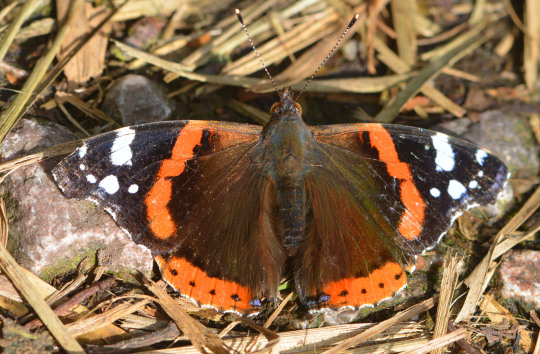
Red Admiral later in the year at Winnall Moors in October
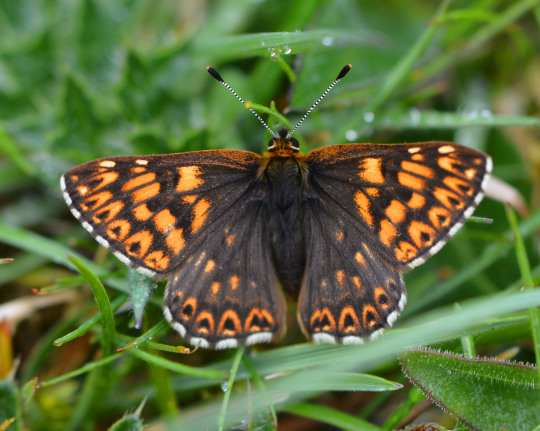
The beautiful Duke of Burgundy
Then came summer, heralded by Large Skipper and Meadow Brown arriving on patch and elsewhere, effervescent species. We saw Small Pearl-bordered Fritillary at Bentley Wood a week before our week in Anglesey, where a Welsh week of wonder in the extremely hot days brought many fantastic butterflies. The Range, South Stacks’s super Silver-studded Blues a New Forest highlight later in the year too and Ringlet, Dark Green Fritillary and Small Skipper across the week furthering my surge into summer and amazingly an early Common Grayling on the Great Orme probably the unique to it Hipparchia semele sub species an exciting moment with one of my favourites which was also a New Forest highlight later on. Summer was in full swing when we arrived back to Hampshire with marvellous Marbled White the epitome of summer seen and a fantastic Essex Skipper at Hayling Island pivotal to my year. Then the dizzy days of summer emerged, defined by big butterfly trips for us. Firstly coastal Durlston where there were clouds of a mini Dorset delight over the flower rich meadows, astonishing Lulworth Skippers a gorgeous species I never tire of seeing seen in huge volumes. Alongside other of the summer species that day we saw our first Gatekeepers of the year notably early, the early emergence not confined to here as I found in the coming days and weeks. In early July came our Knepp pilgrimage where we were treated to superb views of regal Purple Emperors, as well as White Admiral, our first stunning Silver-washed Fritillaries of the year and a precious White-letter Hairstreak. Also enjoyed that day were fine views of Purple Hairstreak, and in the week before and for many weeks after Knepp I was spellbound by watching these oak top dancers at Lakeside so many times getting wonderful views. Once again a key thread in my butterfly and Lakeside year seeing this monumental species so close to home.

Gatekeeper at Lakeside
Perhaps the ultimate moment of my sensational butterfly year was the dream realised on a weekend trip to Norfolk to see the Bee-eaters when at Hickling Broad our first ever Swallowtail flew past us. An exceptionally beautiful, intricately marked and pure giant butterfly that I had wanted to see for years, one of the great exhilarating moments of my year. Summer’s crown followed later in July, our first glimpses this year of sophisticated Chalkhill Blues at Stockbridge Down. At the end of July I had an extraordinary day around the Hampshire/Wiltshire border at Shipton Bellinger getting swashbuckling intimate views of eye-catching Brown Hairstreak a top species, our first Wall Brown of the year and at Perham Down seeing early for us appealing and exquisite Silver-spotted Skipper to confirm my year list as my highest ever. I saw the aforementioned four well multiple times. From late July to early August I was addicted to watching a group of butterflies from Meadow Brown to Holly Blue including the likes of Speckled Wood, Gatekeeper, Peacock, Painted Lady and Ringlet as I enjoyed carrying out so many Big Butterfly Counts again. In early September for species came the fabulous finishing touch of my butterfly year as we were enthralled watching a sun kissed mystical Clouded Yellow sail from flower to flower at Old Winchester Hill’s rich meadow. I excitedly saw another Clouded Yellow out the front in October in a strong run of seeing many butterflies of a few species late in the year.

The Old Winchester Hill Clouded Yellow
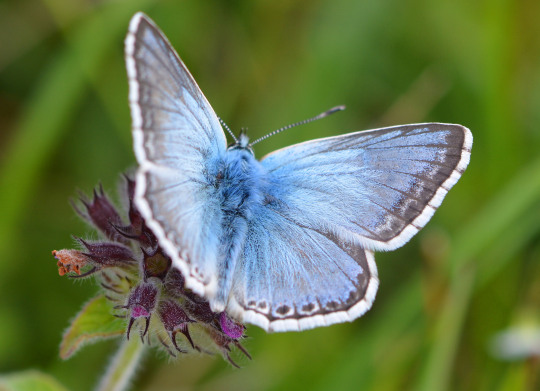
A Chalkhill Blue at Stockbridge Down
In one of my greatest moth years I had a stellar one for day flying moths with a wealth of Six-spot Burnets in the summer I enjoyed seeing them so much, my first ever Forester, Mother Shipton, splendid spring Speckled Yellow moths at Bentley Wood, Silver Y, gorgeous Mint moths, Pyrausta nigrata, amazing moments seeing Scarlet and Jersey Tiger moths on lunch breaks and sensational coastal views of mesmerising Hummingbird Hawk-moths at Durlston and South Stack. Other highlights of a year I saw more moths than ever and focused on them more in moth traps, coming in the house and daytime encounters were; majestic Willow Beauty, many Square-spot Rustics, Vine’s Rustic, Light Emerald, Treble-bar, Setaceous Hebrew Character, Brimstone Moth, Shuttle-shaped Dart, Brown Silver-line, Garden Carpet and impressive Large Yellow Underwing and Lesser Broad-bordered Yellow Underwing.

A Willow Beauty at home in late August

A Brown Silver-line at RSPB Valley Wetlands, Anglesey in June

A Six-spot Burnet at Lakeside in July
#uk#england#scotland#wales#wildlife#wildlife watching#butterflies#moths#insects#six-spot burnet#red admiral#brown hairstreak#swallowtail#clouded yellow#spring#summer#brimstone#willow beauty#setaceous hebrew character#brown silver-line#photography#lulworth skipper#marsh fritillary#adonis blue#chalkhill blue#duke of burgundy#2023#europe#outdoors#nature
1 note
·
View note
Video
Green-brindled Crescent (Allophyes oxyacanthae) - scale details by Will Atkins
Via Flickr:
from the garden, Hertfordshire
#green-brindled crescent#green-brindled crescent moth#Allophyes#Allophyes oxyacanthae#Noctuidae#Noctuid moth#Noctuids#Wildlife#Wildlife of Europe#European Wildlife#Animal#Nature#insect#Insects#Insects of Europe#Insects of Britain#Lepidoptera#Lepidoptera of Europe#UK Lepidoptera#British Lepidoptera#Hertfordshire Lepidoptera#moths#Moth#moths of Europe#UK Moths#British Wildlife#British moths#UK wildlife#Hertfordshire wildlife#Hertfordshire moths
6 notes
·
View notes
Text
Small tortoiseshell butterfly (Aglais urticae) photos I took 30/03/2024, near Smeaton, West Yorkshire, UK


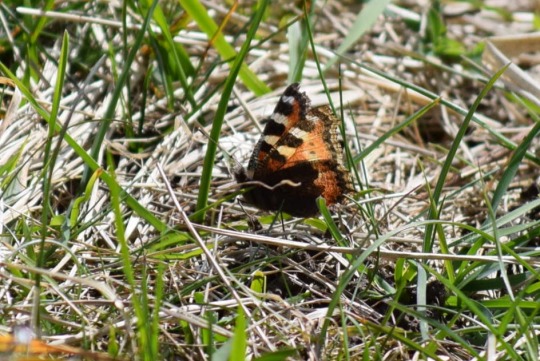

#nature#nature photography#animals#animal#wildlife#british nature#animal photography#wildlife photography#wild#wild animals#tortoiseshell#nymphalidae#orange butterfly#orange#butterflies#butterfly photography#butterfly#lepidoptera#insect photography#insects#insect#entomology#bugs#bug photography#bug#invertebrate#invertebrates#wild animal#british wildlife#lepidopterology
10 notes
·
View notes
Text
VARIOUS BUTTERFLIES
In an earlier post I wrote about the European peacock butterfly, and mentioned that butterflies were one of my favourite animal groups. I’m always on the lookout for sightings of rare species, but unfortunately I never have time to spend looking. However, just walking through campus and around the lake at the right time of year its not uncommon to see several species including orange-tips, brimstones, meadow browns, speckled woods, red admirals, peacocks, and large whites. What is much harder to do is take a good enough picture to include in a blog post! However here is one of a female speckled wood (Pararge aegeria) that I saw in the summer of 2022 down by the lake:
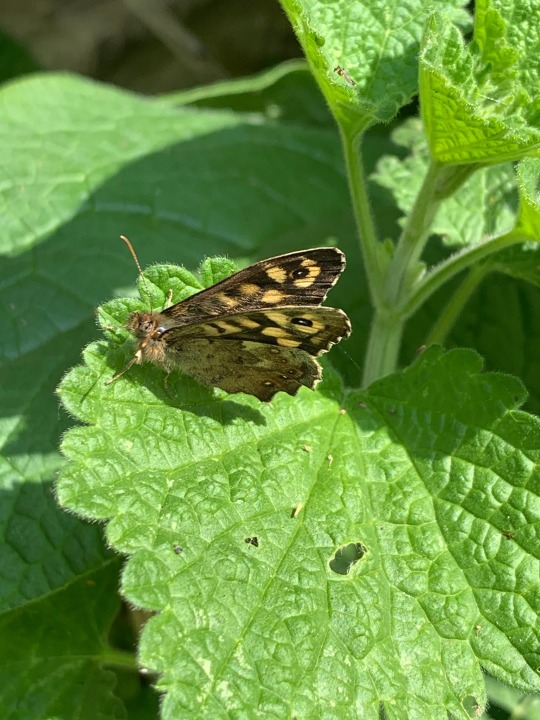
And here is a very useful chart of the lifecycle of the speckled wood, from https://butterfly-conservation.org/butterflies/speckled-wood. This website is a great resource for reliable knowledge on British butterflies and moths, as well as ways to help they conservation!:

Unlike some species of butterflies, such as the common blue, male and female specked woods look very similar. One easy way to differentiate is how much hair is growing on the wings; female tend to be much more hairy than males. Like the peacock butterfly, both sexes have eyespots on their wings as a form of defence. Their name is also an allusion to the camouflage of the wings, which mimics the dark and light browns of bark and dead leaves. They are also a great example that not all butterflies have bright colours and all moths have drab brown colours. In fact, one of my favourite British moths, the elephant hawk-moth (Deilephila elpenor), is known for the tropical contrast of pink and green that colour its wings, body and even antennae! Unfortunately this is the only elephant hawk moth I have ever seen, spotted a couple weeks ago just outside UEA:
Its not a beautiful pink green adult, but even in the larval phase its still a very distinctive species. When it is fully grown like this one the huge size of the caterpillar, compared to other species, has been compared to the trunk of an elephant, which gives this moth the first word of its name. At this stage its colour is much more instructed by camouflaging into the surrounding, rather than the flashy colours of the adult which can be used for other types of signalling such as advertising themselves to potential mates. It also had the eyespots that some Lepidoptera have as an adult. These have a very useful purpose when being threatened by a predator as, combined with the large size of the caterpillar, allows it to mimic a snake by puffing up the anterior part of its body.
I was tempted to pick up and move the caterpillar, for fear it would be stepped on as it was on the pavement, but instead I opted to wait beside it until it had reached the grass so as not to harm it. Usually its best not to try and pick caterpillars up as their bodies can be quite fragile and sensitive, but if they was in the road I would have found a stick and tried my best to coax them on before transporting them to the nearest suitable area.
Lastly, I know I’ve spoken before about the European peacock butterfly, but here is a much better photo I managed to snap!:

0 notes
Text
Conceptual cover for a Bloomsbury Wildlife Field Guide to the Butterfly and Moth Pupae of Great Britain and Ireland (or 'Fgttbampogbai' for short).
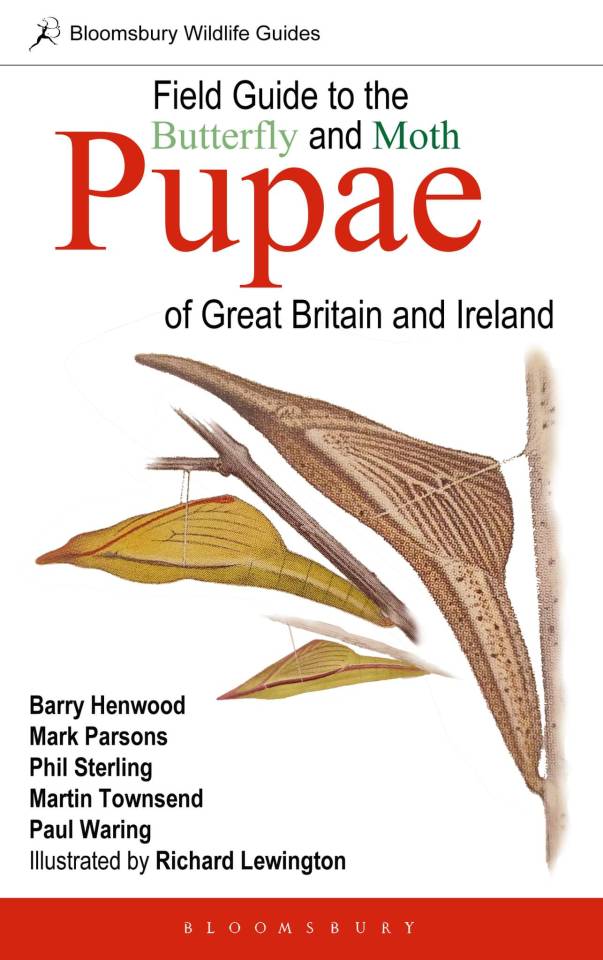
Cover pupae artwork is of the Wood White, Cryptic Wood White, and Orange-Tip Butterflies. From pictures taken of Richard Lewington's Pocket Guide to the Butterflies of Great Britain and Ireland
There's no need for this field guide to exist because of the highly cryptic nature of pupae themselves and the fact so many moth pupae would be the same nondescript brown blob.
However, the collector in me dreams of a complete 5-book British Lepidoptera Field Guide set, up-to-date this would include:
• Field Guide to the Caterpillars of Great Britain and Ireland (2020) by Henwood, Stirling, and Lewington
• Field Guide to the Moths of Great Britain and Ireland (Third Edition) (2017) by Waring, Townsend, and Lewington
• Field Guide to the Micro-moths of Great Britain and Ireland (2012) by Sterling, Parsons, and Lewington
• Pocket Guide to the Butterflies of Great Britain and Ireland (Second Edition) (2015) by Lewington
#bloomsbury#bloomsburywildlifeguides#wildlifeguides#fieldguides#wildlifebooks#butterflybook#mothbook#butterflies#moths#lepidoptera#entomology#britishinsects#pupae#chrysalis#Richard Lewington#UK Insects#micromoths#pupa#cocoon#insects#insectbooks
0 notes
Text
Share associated with Transferrin along with Ceruloplasmin Neurotransmission and also Oxidant/Antioxidant Position to the Results of Pentose phosphate pathway: An instance Series
From the second option circumstance, the particular publicity has been confirmed to be air-borne. In addition, the 5th affected individual ended up being occupationally sensitive in order to sugar-cinnamon, but it has not been the explanation for their hand eczema. Inside the 6 individual, nutmeg allergy ended up being considered to originate from cross-allergy for you to perfumes. 5 of the sufferers reacted in order to cinnamal independently plus scent blend My partner and i. Not one of the half a dozen individuals experienced immediate-type cinnamon allergic reaction. Conclusions: Field-work get in touch with hypersensitivity in order to sugar-cinnamon is rare yet must be regarded as inside personnel coping with food items. Cinnamal is just about the major allergen in nutmeg.Given that Tuta absoluta (Meyrick) (Lepidoptera: Gelechiidae) was first detected following 2006 inside the Mediterranean sea Basin, many endemic normal enemies happen to be noted in order to victimize this specific exotic pest. The predator Nesidiocoris tenuis Reuter (Hemiptera: Miridae) could manage Big t. absoluta populations, because it is able to food proficiently on Big t. absoluta eggs. In addition, earlier numerous studies have revealed that first-instar caterpillar of To. absoluta are remarkably prone to Bacillus thuringiensis (British telecom) remedies. With this function, we tested a combination involving the two strategies below green house situations. B. thuringiensis preparations had been sprayed each week for just two a few months, 3 months or perhaps through the entire developing never-ending cycle, plus every case, one In. tenuis every place has also been launched. Handle plant life have been #Link# totally destroyed from the infestation quantities reached simply by To. absoluta. In comparison, all treatment options according to B. thuringiensis remedies and releases of D. tenuis diminished foliage harm by simply over 97% in comparison to the with no treatment handle, without having substantial distinctions one of them. Moreover, deliver within the management plant life has been drastically reduced when compared to just about all Bt-N. tenuis remedies. Our final results show whenever N. thuringiensis methods are employed immediately after the original recognition involving To. absoluta in vegetation, they cannot hinder D. tenuis establishment from the plants simply because T. absoluta eggs are available. As outlined by our information, treatment options along with W. thuringiensis after within the expanding season would stop necessary simply because mirids alone might control the actual pest.Human enteroviruses are generally related to various clinical syndromes as well as severe nerve disorders. The purpose of these studies would have been to determine the molecular epidemiology involving low polio enteroviruses in addition to their connection using acute flaccid paralysis (AFP) people living in Khyber Pakhtunkhwa (KP) and Government Administered #Link# Tribe Areas (FATA) of Pakistan. The feces #Link# biological materials gathered readily available patients were chosen with regard to seclusion involving non polio enteroviruses (NPEVs). Out of Thirty eight samples, Twenty nine (Seventy six.3%) ended up effectively wrote simply by microneutralization assay into 12 serotypes which include echovirus (Elizabeth)-3 (Five.
0 notes
